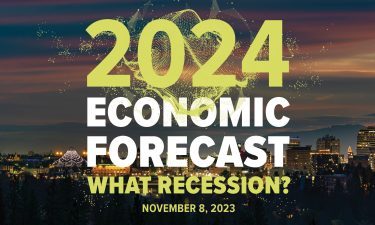
Home » Wage growth, youth spending drive core inflation
Wage growth, youth spending drive core inflation
Gen Z consumers appear optimistic and are not afraid to spend; will Fed respond further?

November 8, 2023
The U.S. Federal Reserve Bank closely tracks overall inflation, especially core inflation. Core Personal Consumption Expenditures (PCE) is the inflation measure economists prefer to track as it excludes the volatility of energy and food prices. Excluding spikes in energy and food prices allows economists to disaggregate inflation and measure changes in the price of “core” or basic goods and services.
According to data released in September by the Fed, overall inflation, while easing, remains elevated at an annual increase of 3.4%, significantly above the long-run goal of 2%. Core inflation rose 3.9% over the last 12 months as of August.
Since the reopening of the U.S. economy from the pandemic closures, there has been a significant surge in demand for goods and services. There also has been a significant surge in demand for travel, eating at restaurants, and indulgence in experiences. The desire to spend more was partly driven by pent-up demand from the pandemic, but a great deal of this demand has been driven by wage growth in low-skilled labor and/or entry-level employment wages.
Data published by the Federal Reserve Bank of Atlanta tracks wage growth by age. The data show that members of the Gen Z generation, born between 1997 and 2012, received the largest wage increase between 2020 and 2023. In October of 2022, the 12-month moving average of median wage growth for people aged 16-24 increased by 13%, compared to 6.3% for individuals aged 25-54 and 4% for people aged 55 and older. While all age groups experienced historically higher wage increases, wage growth for younger workers skyrocketed as compared to other age groups (see graph).
Strong wage growth in the young population has been fueled by a tight labor market, especially in low-skilled labor such as retail, hospitality, food service, and manufacturing. This wage growth and a strong appetite for splurging in experiences, services, travel, and cosmetics, have contributed to higher core inflation. Credit card and debit card data published by McKinsey & Company show that although all consumers increased spending post-pandemic, Gen Z and millennials accounted for most of the increase in consumer spending.
In forecasting inflation for the months and years to come, economists look at several economic indicators to assess price fluctuations over time. Consumer confidence or optimism about the economy is an important indicator of consumer spending reflected in inflation projections. According to McKinsey ConsumerWise Global Sentiment Data, U.S. consumer optimism decreased slightly in the third quarter of 2023 as compared to the spring. This data show that baby boomers are currently the most optimistic about the economy, while millennials are less optimistic. Gen Z consumers, however, appear optimistic and are not afraid to spend. According to data from Visa Inc. published by Saraiva and Pickert in Bloomberg, in the past two years, Gen Z spent more than they did a year earlier and spending by this group expanded while other age groups were cutting spending.
According to a survey tracking the share of individuals intending to splurge in spending administered by McKinsey & Company, younger consumers intend to splurge in 2023. Over the summer of 2023, 55% of Gen Z and 54% of millennials across all income groups, expressed a desire to splurge. In the data, among all age and income groups, the intent to splurge was greater among high-income millennials. In terms of intent to splurge by category, the survey indicates that food and travel continue to be “splurge-worthy” categories for most U.S. consumers.
As we look into the future and draft projections for economic activity, inflation, interest rates, wage growth, consumption spending, and consumer optimism are important variables to track. Although core inflation is lower today, it remains elevated, and strong projected spending by young consumers and baby boomers may necessitate tighter monetary policy to contain inflation.
Dr. Vange Hochheimer is a professor of economics and finance at Whitworth University and CEO of Grand Fir Analytics LLC.
Economic Forecast
Related Articles
Related Products




